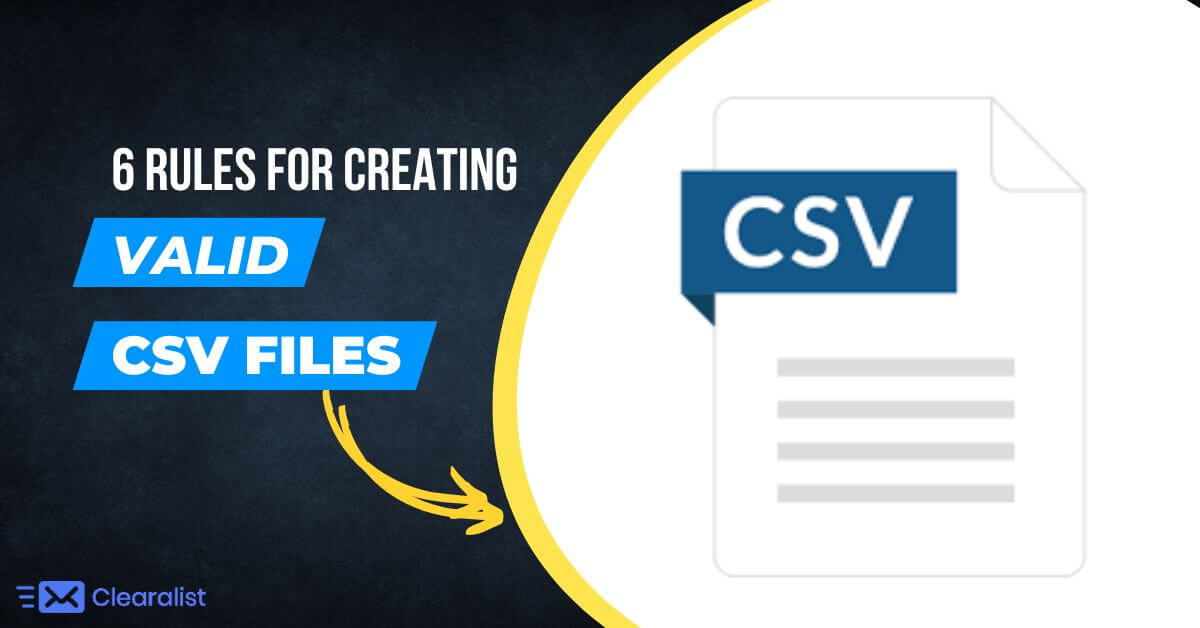CSV is a (Comma Separated Value) file format utilized to store tabular data, such as a spreadsheet or database.
What makes a “good” CSV file as opposed to an “evil” one? Okay, I suppose evilness isn’t really a property of CSV files, but if you’ve ever wrestled with a bad one, I think you know what I mean.
Since you’re now aware that CSV (comma-separated value) files are superior to delimited files for data importing, let’s talk about how to create a CSV file.
Here are the rules for creating Valid CSV files:
1. Separate data fields with a delimiter, usually a comma. This should be a single character. If you do not want to use a comma, you should choose something like a tab or a pipe (|) character. (Don’t use new lines & comma characters in any fields before uploading a CSV file to an email verification system or it may cause a syntax error.)
2. Keep each record on a separate line. Each record must start on its own line, but a single record can span multiple lines.
3. Do not follow the last record in a file with a carriage return.
4. In the first line of the file, include a header with a list of the column names in the file. This is optional, but strongly recommended; it allows the file to be self-documenting.
5. Make sure the header list is delimited in the same way as the rest of the file. This helps guard against the data fields being transposed in the data when it is loaded, which can lead to getting wrong answers when you query the data.
6. Remember that the enclosing character (typically double quotes) must be used when required, such as when the delimiter appears in a field.
For more detail on these rules, you can look at Wikipedia and RFC 4180 (the Request for Comments document in the CSV specification).
Happy email cleaning!
